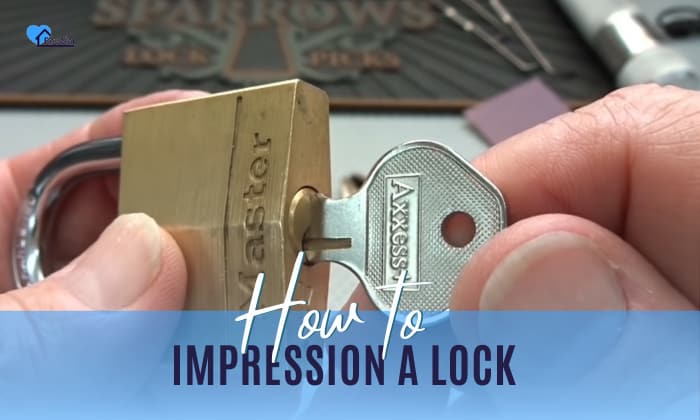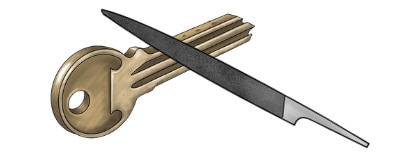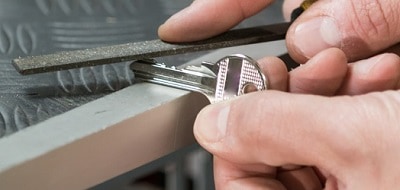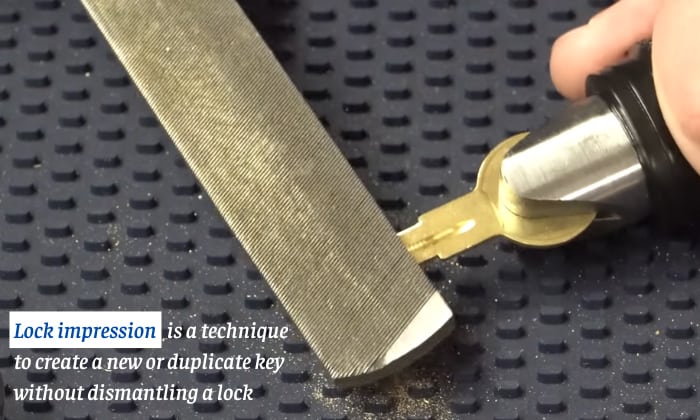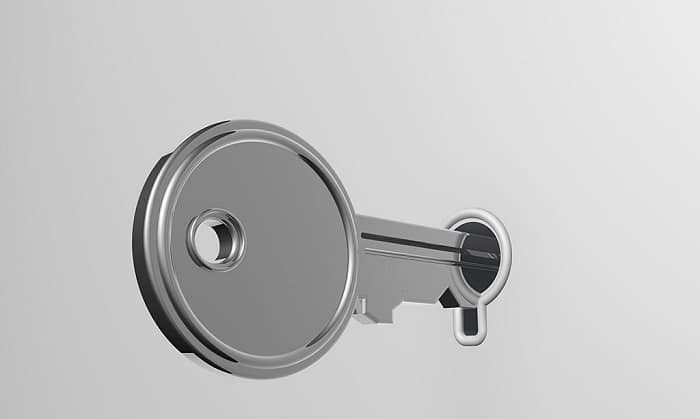Do you always have to disassemble or break the locks whenever you lose your keys? While you can always call a locksmith to help you unlock it, you can actually do it with lock impressioning.
Whether you’re a locksmith who’s looking for ways to improve your skills or just wants to learn how you can open your locks without the original keys, here’s everything you need to know on how to impression a lock.
Table of Contents
Step-by-step Guide to Impression a Lock
Here’s a detailed guide and the necessary tools needed to impression lock.
What to Prepare
- Key Blanks
- Lock
- Vice Grip
- Pippin File
Before we begin with the process of impressioning keys, make sure you purchase at least 3 – 4 key blanks. This ensures you have spare blank keys in case you fail on your first try.
If you’re new to this and if you’re not sure which one will work for your lock, a locksmith can help you find the right key blanks. Once you have the right key blank and your impressioning kit, you’re now ready to make a lock impression.
Step 1: File the Key
The first step is to file the sides of the key blank using your Pippin file. Carefully file the sides until it becomes like a sharp blade.
Step 2: Mark the Key Blank
After sharpening the sides of the key blank, use the vice grip to hold the key and insert the key blank in the lock.
Twist the key left and right and move it up and down carefully several times. You would want to get all the pins and cuts to mark your blank key.
Step 3: File and Shave the Key
Remove the key from the lock and check the markings or impressions. File and shave the key following the markings bit by bit.
Step 4: Repeat the Process
Re-insert the key in the lock and twist it again. Repeat the procedure to create new impressions on the blank key. This will allow you to find out where you still need to file and shave it until it can finally open the lock.
However, be sure to do this carefully so as not to break the key.
Note:
- This process can take some time and that you may need to repeat it several times until you come up with a working key.
- Since there are different types of locks, the guide provided above will only usually work with disk tumbler and pin tumbler locks.
- While the process is almost the same for most locks, you may need a different impression key tool for each type of lock. For instance with tubular lock impressioning, you would need a tubular lock impression tool to get it done.
What is Lock Impressioning?
Lock impression is a technique to create a new or duplicate key without dismantling a lock. It is done by using a blank key and an impressioning tool to shape the markings on the blank key by filing and shaving it.
However, there are other impressioning techniques you can try such as key-based impressions.
The key-based impression is to make a key from a wax impression. Other impressioning materials you can use are silicone and clay.
Basically, you need to create a negative image of the key using the original key and cast it with metal or epoxy to open a lock.
Other materials you might need for the key-based impressioning technique are:
- Key impressioning mold
- Lubricant
- Paintbrush
- Knife
Advanced Techniques for Lock Impressioning
While making lock impression key may seem straightforward, you may experience some issues while trying to impression a lock.
So here are the common issues you may encounter and how you can troubleshoot them using these advanced techniques.
1. Key Blank Can’t Fit In
It is important that you have the correct key blank for your lock, because if not. You won’t be able to get the right markings or you won’t be able to insert it in your lock.
While you can always ask a locksmith to help you identify the right key blank for your lock, it pays to know how to identify the right key blank for a lock.
This is particularly helpful if you’re training to become a professional locksmith or is a locksport enthusiast. You’d need a key blank directory to help you identify the right key blank for a particular lock.
When finding the right key blank, you need to analyze the lock’s keyway profile and other specifications such as the spacing and component count.
2. Failure to Get the Markings
Key blanks are made of different materials and in order to create better markings on your key blanks, it’s best to use keys that are made of aluminum or softer brass. This will enable you to get the markings easier and analyze them better.
3. Can’t Identify the Transfer Marks
Sometimes, it’s hard to see the transfer marks on the key blank. You can use a magnifying glass to see even the tiniest markings on the key.
Another technique is by getting a lighter and by placing the key blank above the lighter’s flame. The soot from the lighter will help you find the transfer marks better.
Safety and Legal Considerations for Lock Impressioning
Lock impressioning is intended for professional and licensed locksmiths, just like with lock picking. However, it is not illegal to practice or learn lock impressioning even if you’re not a locksmith.
With that said, you should only do this with your own locks or unless someone permits you to impress their locks.
Always keep in mind that lock impressioning should never be used for illegal activities.
Alternative Methods for Gaining Entry
If you’re locked out or need to gain access to a lock, there are other methods you can try aside from lock impressioning.
1. Lock Picking
It is also a non-destructive way to open a lock. You would need some lock picks and tools in order to successfully open a lock without a key.
2. Bumping
For this method, you need a key bump to insert into the lock without fully inserting it. Get a mallet or any tool that you can use to bump the key inwards.
Bump the lock in different directions so the key is pushed deeper until all pins are aligned to allow you to open the lock.
3. Use of ID or Credit Card
Another option that doesn’t require any special tools or experience is by using a credit card or any ID similar to a credit card.
All you need to do is thrust the card into the door jam just below the strike plate. Once the door latch is pushed back, it will allow you to open the door.
If nothing works, then you might need to disassemble your lock to gain entry or call a locksmith to help you out.
FAQs
Who can impression a lock?
While lock impressioning is mostly practiced by locksmiths and used in forensic investigations, anyone who is knowledgeable or interested in lock impression can do it.
Can lock impressioning damage the lock?
No, since the whole point of lock impressioning is preventing the lock from getting damaged or from disassembling the lock to create a working key.
How long does it take to impression a lock?
It depends on how skilled a person is. On average, it can only take 5 to 10 minutes to impression a lock provided the person is an expert and has the right tools.
Can you make key impressions on soap?
It is possible to make a key impression on soap just like how you would use silicone or clay.
Conclusion
Learning how to impression a lock takes patience and a lot of practice. Don’t get frustrated if you fail on your first try. Even the best locksmiths had their fair share of unsuccessful attempts.
If you feel stuck, revisit the techniques mentioned above to help you master your lock impressioning skills.
Also, always remember the possible legal implications of using this skill to impression a lock without the owner’s knowledge or permission.

I am the last member to join Revolar and might be just the luckiest to work with dedicated people like Teddy and John. Our team has established a process where my only job is writing the best content to deliver incredible ideas and guides.


